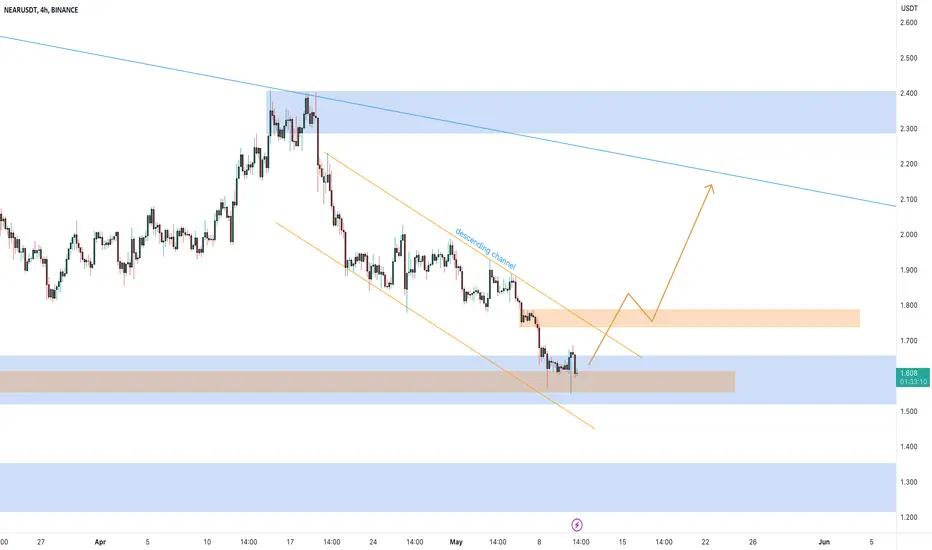NEARUSDT. The support level acts as a barrier preventing the price from declining further.
On the 4-hour timeframe, the price of NEARUSDT is forming a descending channel. A descending channel is a technical chart pattern characterized by a series of lower highs and lower lows, forming parallel trendlines. This pattern suggests a bearish bias in the market, with sellers exerting control over the price movement.
If the price of NEARUSDT experiences a breakout from the descending channel and subsequently retests the resistance level as new support, it would align with the principles of Plancton's Rules. Plancton's Rules is a trading strategy that emphasizes long positions when the price breaks above a resistance level and retests it as support, indicating a potential bullish trend continuation.
Traders and investors will closely monitor the price action to determine whether the support level holds or if a breakout occurs. If a breakout happens and the price successfully retests the resistance-turned-support level, it may present an opportunity for new long positions according to Plancton's Rules. This would imply a potentially bullish outlook for NEARUSDT, suggesting a continuation of the upward trend.
As always, it is important to conduct thorough analysis and consider other indicators or factors before making trading decisions.
–––––
Follow the Shrimp 🦐
Keep in mind.
On the 4-hour timeframe, the price of NEARUSDT is forming a descending channel. A descending channel is a technical chart pattern characterized by a series of lower highs and lower lows, forming parallel trendlines. This pattern suggests a bearish bias in the market, with sellers exerting control over the price movement.
If the price of NEARUSDT experiences a breakout from the descending channel and subsequently retests the resistance level as new support, it would align with the principles of Plancton's Rules. Plancton's Rules is a trading strategy that emphasizes long positions when the price breaks above a resistance level and retests it as support, indicating a potential bullish trend continuation.
Traders and investors will closely monitor the price action to determine whether the support level holds or if a breakout occurs. If a breakout happens and the price successfully retests the resistance-turned-support level, it may present an opportunity for new long positions according to Plancton's Rules. This would imply a potentially bullish outlook for NEARUSDT, suggesting a continuation of the upward trend.
As always, it is important to conduct thorough analysis and consider other indicators or factors before making trading decisions.
–––––
Follow the Shrimp 🦐
Keep in mind.
- 🟣 Purple structure -> Monthly structure.
- 🔴 Red structure -> Weekly structure.
- 🔵 Blue structure -> Daily structure.
- 🟡 Yellow structure -> 4h structure.
- ⚫️ Black structure -> <= 1h structure.
Disclaimer
The information and publications are not meant to be, and do not constitute, financial, investment, trading, or other types of advice or recommendations supplied or endorsed by TradingView. Read more in the Terms of Use.
Disclaimer
The information and publications are not meant to be, and do not constitute, financial, investment, trading, or other types of advice or recommendations supplied or endorsed by TradingView. Read more in the Terms of Use.
